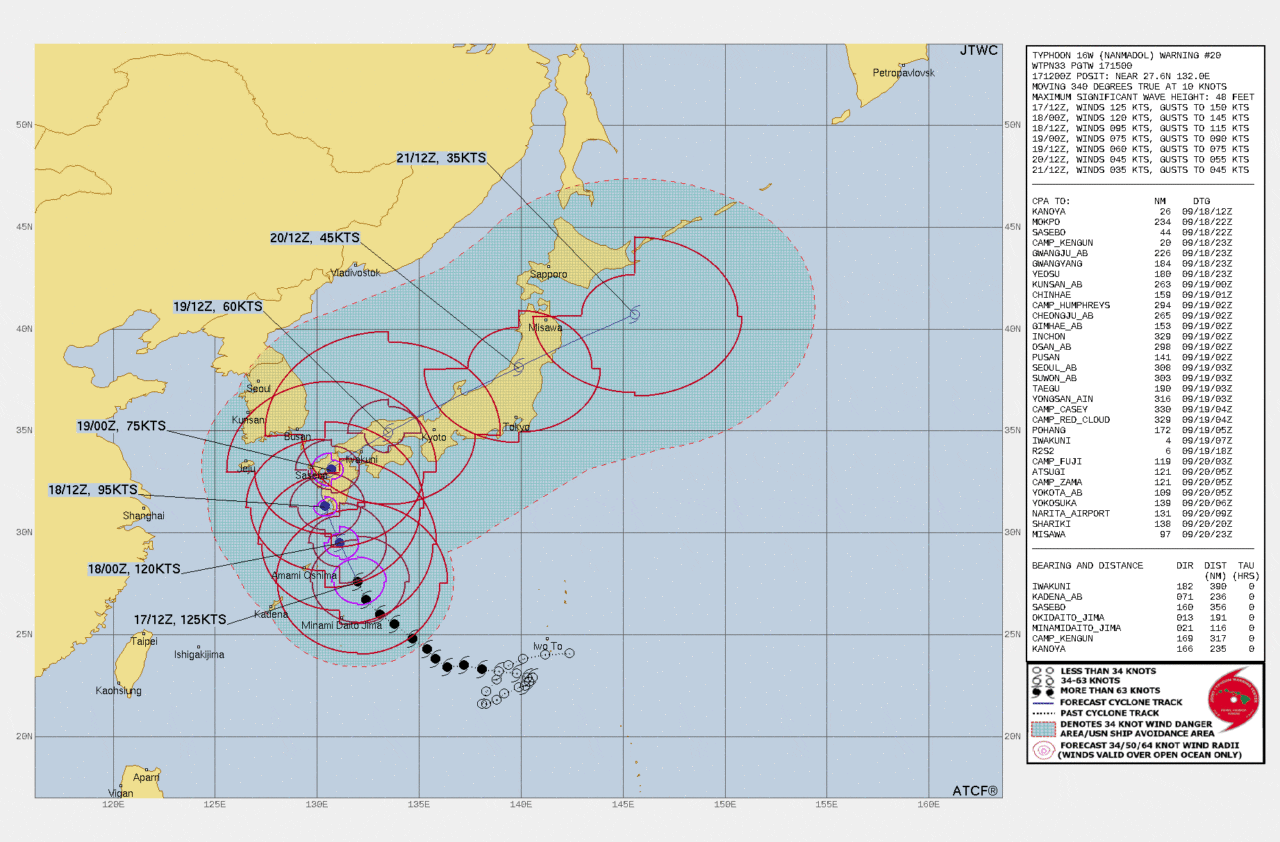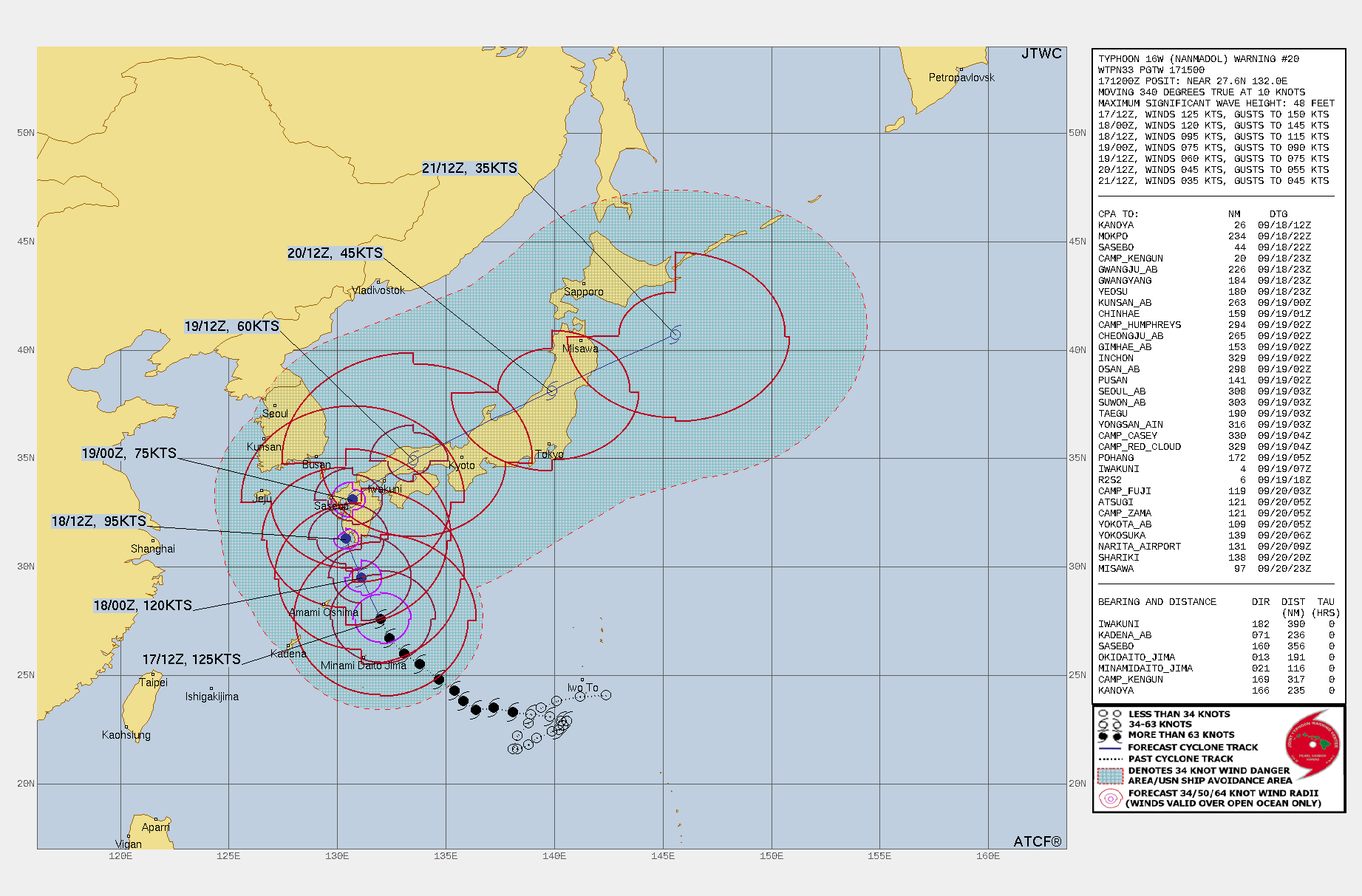Typhoon Nanmadol could be more impactful than Jebi or Hagibis

Typhoon Nanmadol is a potentially significant Japanese loss threat for insurance and reinsurance market interests, while meteorologists are warning it could be more impactful than recent damaging typhoon’s Jebi and Hagibis.
Typhoon Nanmadol is set to strike southwest Japan on Sunday with sustained winds of 110 mph and higher, plus gusts of more than 140 mph, according to some forecasts.
The Japanese meteorological agency (JMA) has now classified typhoon Nanmadol as “violent” as the super typhoon strength storm may not weaken quite as much as had been thought, before it makes landfall in Kyushu.
A special warning has now been issued, the first time this has happened outside of Okinawa where typhoon’s are seen to maintain their wind speeds more over warmer waters.
The JMA is forecasting only slight weakening before typhoon Nanmadol hits Kyushu, raising the potential for significant impacts across some of its largest cities.
At a news conference, a JMA official has likened the damage potential of typhoon Nanmadol to the two most recent impactful typhoons to strike Japan, Jebi and Hagibis.
2018’s Jebi and 2019’s Hagibis both caused significant insurance and reinsurance market losses, in the ten billion plus dollar ranges.
For Kyushu, Nanmadol could have even worse impacts than those two storms, the official warned.
At its current expected landfall intensity, typhoon Nanmadol could easily be in the top-ten strongest storms to impact Japan on record.
After it makes landfall in the southwest region of Japan, typhoon Nanmadol is forecast to turn more easterly direction and track the length of Japan, weakening as it goes. Click the image below for a larger version.

Sea surface temperatures remain conducive for typhoon Nanmadol to hold onto much of its strength as it approaches the Japanese island of Kyushu.
Forecasts suggest up to 500mm of rainfall in the Kyushu region, sufficient for significant flooding and landslides, while wind speeds could be higher than anticipated according to the JMA, with the potential for Category 3 strength winds on landfall and a slower than anticipated weakening due to typhoon Nanmadol’s size.
With major cities, industrial regions and ports all in the path of the typhoon through Kyushu and beyond as it tracks through Japan, there could be significant business disruption potential, as well as direct property damage.
Insurance and reinsurance market sources are watching typhoon Nanmadol, as it has the potential to deliver a relatively significant industry loss, if it continues to look like striking the Japanese main islands with winds of around Category 3 strength.
Andrew Siffert, Senior Meteorologist at insurance and reinsurance broker BMS commented, “Super Typhoon Nanmadol is predicted to strike Japan with 125 mph category 3 winds in the next 48 hours. This is looking like a devasting blow for Japan as Nanmodol tracks are northwest along the entire length of Japan’s mainland.
“This will likely be a pretty big news event for the worldwide insurance industry next week.”
Insurance and reinsurance broker Aon said it expected “non-negligible damages” from typhoon Nanmadol’s track across Japan.
Japan is facing a difficult few days with typhoon Nanmadol, with the potential for impactful wind and rains, and hundreds of thousands being told to evacuate as the storm approaches.
It’s worth noting that Japanese typhoon risk is a reasonably large exposure for the insurance-linked securities (ILS) market, in both catastrophe bond and collateralised reinsurance form.
With a number of Japanese typhoon cat bonds also covering water driven impacts from rain and surge, as well as wind damage.
So ILS fund managers will be watching this typhoon closely too as it nears landfall tomorrow.






